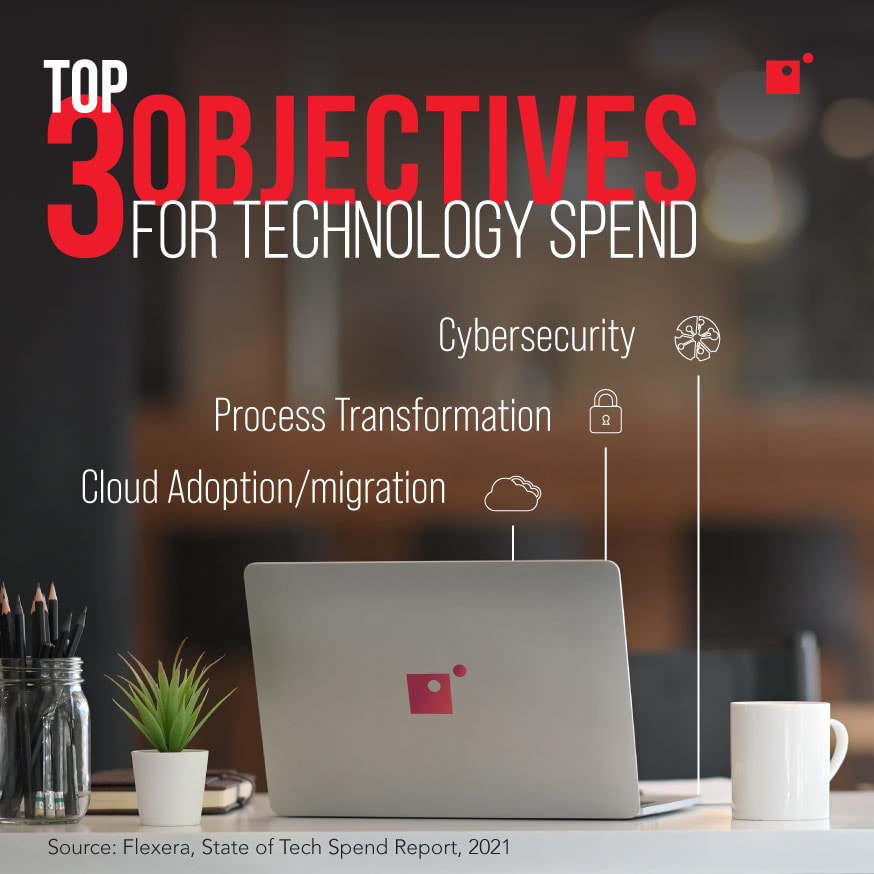Business digitization remains a key and essential aspect of modernizing any organization. More and more businesses are looking to digital means to collect and store data, communicate, and manage key business processes. Though the main goal of this kind of digitization is simplicity and making life easier for employees and customers, it’s also a complex thing to implement due to the required technical knowledge and industry experience needed to do it correctly.
As organizations more frequently compete on the basis of their ability to leverage data and technology, it becomes more important for companies of all sizes—especially SMBs—to embrace new solutions in order to keep up with the pace of change.
But, how does a company get started? What are the most sought-after technologies? What are the key digital transformation objectives for companies? What are business leaders’ concerns?
These are the questions whose answers lead you to a more promising digital future and which will be answered below as we walk you through what a business digitization strategy looks like today and in the future.
The Need for Business Digitization
What are the primary factors that are driving business digitization?
Broadly speaking, there are three key drivers that are behind increased investment in business digitization.
These can typically be defined across the following areas:
Cloud Security
Cybersecurity is a big concern for companies currently. The need for it is only exacerbated when so much of a business’ data is stored digitally via the cloud. Previously an issue that has only dogged larger enterprises—which often already have established programs for security—cyberattacks have been increasingly targeting SMBs due to them typically being an easier target because of a lack of established cyber protocols. Malicious actors now have many more attack vectors they may never have previously targeted.
This is compounded when businesses offer hybrid or remote work to employees. With remote work circumstances, employees are almost certainly operating within home networks which do not have the same standards of protection when compared to business networks.
No companies are less prepared to meet modern cybersecurity standards than SMBs. For the most part, SMBs invest less in their security than their larger counterparts, they’re less likely to have an existing plan in place, and less likely to have a dedicated security team; relying instead on IT staff or no one at all.
Businesses spend $170,000 on average to fully resolve data breaches after being hit.
A combination of these factors means that cloud security is a major consideration for businesses when investing in business digitization programs, as demonstrated by country-wide spending on security, which we will get into soon.
Cloud Services
The second big driver of business digitization strategies is the adoption of cloud services.
For most of the 2010s, there was a certain reluctance by businesses across the country to embrace cloud technology adoption fully. While in 2011, 51% of organizations had at least one portion of their computing infrastructure based in the cloud, that figure had risen to 81% by 2020 and in 2022, 94% of enterprises are using cloud services. These numbers are expected to increase further in the next decade. Why? Because many of the fears of cloud storage (security, feasibility, cost, etc.) have all become quelled by innovations in cloud technology and digitization.
The improved availability and affordability of previously out-of-reach technologies—not least those pertaining to advanced analytics, AI, and automation—has opened up a wealth of opportunities for small and midsized businesses to take advantage of. As a result, companies have scrambled to invest in cloud services, seeking to stay abreast of their competitors who are already gaining key market advantages through the use of cloud services in their operations.
Previous concerns about cloud services, particularly pertaining to security and compliance, are quickly subsiding as the data centers operated by service providers become more secure—today typically rivaling or surpassing most on-premise servers.
Security concerns (44%), compliance and regulations (42%), and lack of application support (41%) are the most reported barriers to full cloud adoption.
Business Operations
The need for businesses to improve their operational efficiency is nothing new, and business digitization strategies implementing modern solutions today are serving this same purpose.
Business processes, particularly regarding common workflows within operations such as data entry, are easily automatable through new technology. Early technology adopters of these new innovations saw the benefits of implementing practices like digital document workflows and automation which has necessitated their competitors to do the same. The benefits of these technologies in business operations are too great to ignore, that’s why the adoption of new tech is so common.
65% of businesses are currently looking to digitally transform in the near future.
These organizations that have successfully streamlined many of their processes are able to re-invest previously wasted resources in other aspects of their operations, too.
When you also consider the amount of data that now flows in and out of businesses, in many cases, there is simply too much to deal with effectively.
Employees spend an average of 1.8 hours every single day searching and gathering data—that’s 9 hours per week that could have otherwise been spent doing something more valuable.
Furthermore, as we noted above, there is an increased appetite in businesses to utilize cloud services. This is the best way to leverage the large volume of data sets that exist within organizations. For the majority of companies, this means the adoption of cloud tech that facilitates the handling and use of data and information in a way that improves their operations.



